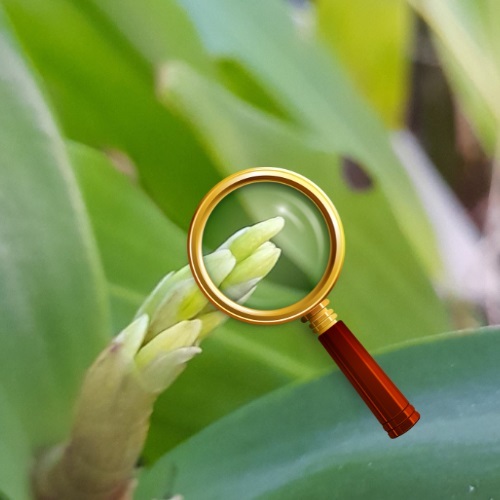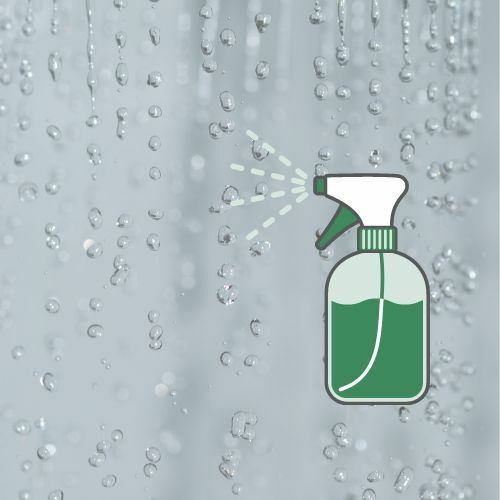Don't Be Fooled! 21 Houseplant Myths Debunked for Happy Homes
In the vibrant world of houseplants, a constant stream of tips and tricks flows from well-meaning friends, internet forums, and even those charming plant labels. While many suggestions promise a thriving indoor jungle, some harbor hidden dangers.
Before blindly trusting every piece of advice, it's important to understand how seemingly great plant care practices can actually hinder your leafy companions and extinguish their verdant dreams.
.
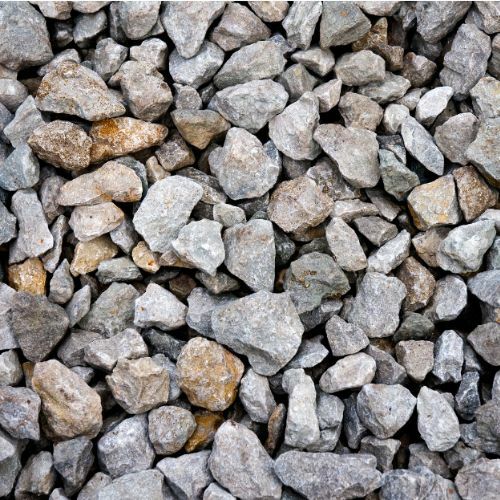
Myth 1 : Rocks at the bottom improve drainage.
Placing rocks at the bottom of a pot is a common misconception and actually does not improve drainage.
It just decreases the amount of good soil your plant has available.
Instead mix pumice, perlite, or small rocks into the potting mix for better drainage.
.
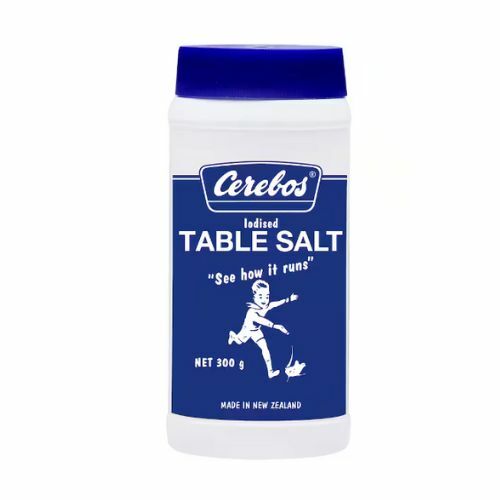
2: Salt is not recommended as a weed killer
Salt harms soil: It acts as a desiccant, drawing moisture out, making it difficult for plants to grow.
Non-selective killer: Salt kills all plants, not just weeds, harming your desired plants.
Long-lasting issue: Salt is hard to remove from soil, potentially leaching down and contaminating groundwater.
.
3: Hold Off Watering After Repotting.
This depends on which plant you are repotting.
A moisture-loving plant, like a begonia, I would water. It settles the soil, removes air pockets, and helps roots establish in the pots.
But something like a cactus, which is more prone to root rot, especially when you may have damaged its roots when repotting, I would not water immediately. Wait a few days until the roots have healed.
.
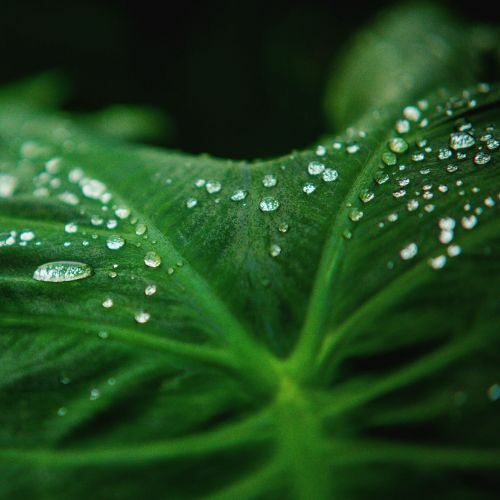
4: Leaf shine sprays?
Skip the leaf-cleaning sprays! Sprays can block sunlight and harm your plant.
A damp cloth or water rinse removes dust without chemicals.
Putting plants outside in the rain or the shower is also a great suggestion.
.
5: Fertiliser Myths
Myth: always fertilise your plants.
Not necessary if recently repotted using a nutrient-rich potting mix.
Plants make their own food through photosynthesis. Fertilize if your plants lack nutrients.
More Fertilizer does not mean more Growth.
Don't overfertilise plants, use the recommended dosage for each kind. Regular light applications are better than only an annual over-generous application.
Plant Food Fixes Sick Plants? Not Quite! Extra fertiliser can worsen the issue. Identify the problem, address it, and let your plant recover.
.
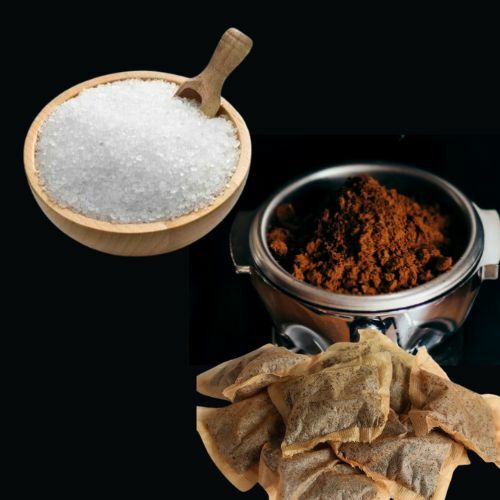
6: Epsom Salts, tea bags or coffee grounds as a fertiliser.
Epsom salts may provide a temporary fix, but a completely balanced fertiliser would be a better long-term solution.
Tea bags aren't a good fertilizer for houseplants. They lack complete nutrients and can attract mold. Use balanced fertilizer and good potting mix instead.
Coffee grounds are not a magic plant food. It can be acidic, harming some plants. Compost first or use sparingly.
.
7: Humidity Myths
Misting Houseplants Increases Humidity.
Misting houseplants doesn't increase humidity, use a humidifier or group plants together instead.
Plants love Steamy Bathrooms.
While bathrooms get humid during showers, they lack consistent warmth and dry quickly, making them unsuitable for most humidity-loving plants.
.
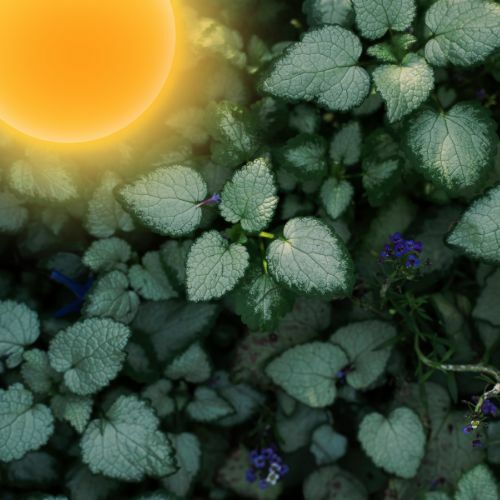
8: Full sun vs no light
Not all plants need direct sunlight. Many species thrive in indirect or filtered light. Research your plant's specific needs to create a flourishing indoor haven.
No plants will florish without some light. Plants recommended for situations with inadequate light will grow long and lanky to compensate.
Solution for dim spaces: Use LED grow lights to supplement natural light.
Sun Worshippers: Some plants crave direct sunlight (6+ hours daily) and thrive in bright windows.
Shade Seekers: Others prefer indirect or filtered light, like a north-facing window.
Dim Dwellers: Even low-light tolerant plants need some light. Research your plant's needs to avoid leggy growth (stretching for light)
An earlier blog that I wrote, with regards cacti, succulents and light requirements.
.
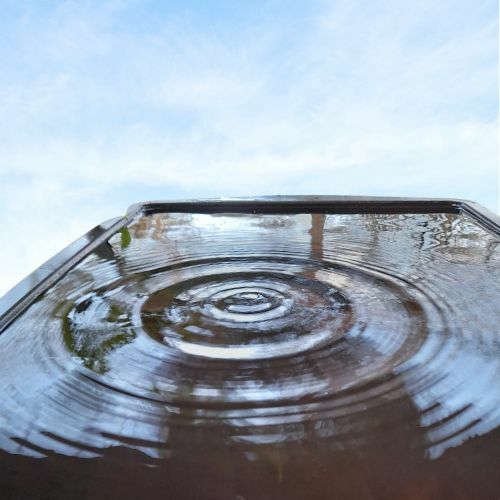
9: Myths about Which water is best for plants.
Myth 1: Chlorine Kills!
Fact: Trace amounts of chlorine in tap water are actually beneficial for plants.
Myth 2: Overnight Detox for Tap Water.
Fact: There's no need to wait! The amount of chlorine in tap water is minimal and won't harm your plants. Focus on using room temperature water to avoid shocking the roots.
Myth 3: Not a myth, rainwater is Magical!
Fact: Rainwater is a great option, it comes ready oxygenatied. Use instead of purchasing carbinated water.
Myth 4: Nighttime Watering is Best.
Fact: Water based on weather and plant needs, not the time of day. In hot weather, water early in the morning to avoid midday evaporation. For mildew-prone plants, water earlier to allow leaves to dry quickly.
Myth 5: Ice Cubes are Cool.
Fact: Skip the ice cubes! Use room temperature water for even soaking throughout the soil.
Myth 6: Distilled Water is the Holy Grail
Fact: Most plants thrive with regular tap water. Only avoid it if it has high alkalinity or sodium. For hard water, simply dilute it with rainwater or filtered water.
.
10: Myths about the best way to Water plants.
Fact: Skip the sprinkles!
Deep watering ensures water reaches all the roots. Water slowly and thoroughly until it drains from the pot.
Fact: Ditch the watering calendar!
Different plants have different needs. Don't be strict on when you water. Check the soil moisture regularly, not a calendar, to avoid over or underwatering.
Bottom watering is best for all plants.
Fact: This method can be helpful for mildew-prone plants as it keeps leaves dry. However, it's not ideal for deep-rooted plants and requires monitoring water levels to avoid overwatering.
Remember: Let the soil dry somewhat between waterings. The frequency depends on the plant and pot size. Seasonal growth, temperature, and humidity also need to be considered.
.
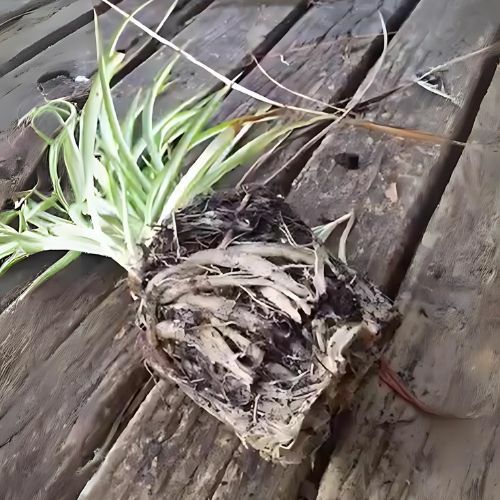
11: Plant Repotting Myths.
Fact: Give your new plant time to adjust to its new home before repotting. Look for signs like roots circling the pot or slow growth before considering a new container.
Fact: Repotting size matters! A huge pot can lead to root rot as the soil stays wet for too long. Choose a pot only slightly larger than the current one to encourage healthy growth.
Myth: avoid touching the roots.
1. Don't be afraid to loosen the roots: Contrary to some beliefs, it's actually beneficial to gently loosen the roots of a pot-bound plant when transplanting it to a new pot.
2. Address root circling: Tightly circling roots can restrict nutrient and water uptake, hindering the plant's growth.
3. Prune strategically: For severely root-bound plants, carefully slice off a small portion of the most congested roots.
4. Loosen the soil: Gently loosen the compacted soil around the roots to encourage them to spread out in the new pot.
By following these steps, you can increase the chances of your transplanted plant thriving in its new home.
.
12: Myth: Do not have plants in the bedroom.
The small amount of CO2 plants release at night is harmless to humans.
The calming atmosphere that plants bring to your house, outweighs any of these negatives.
.
13: Plants, pets and young children. Instead of a plant purge, focus on smart safety:
Some people get carried away, finding out which plants are toxic-banning them from inside the house and killing any in their gardens.
There is no need. Keep the indoor ones out of reach., teach your children.
Educate children about safe vs. unsafe plants.
Not all pets are plant chewers. Research your pet's behavior to see if a plant ban is necessary.
.
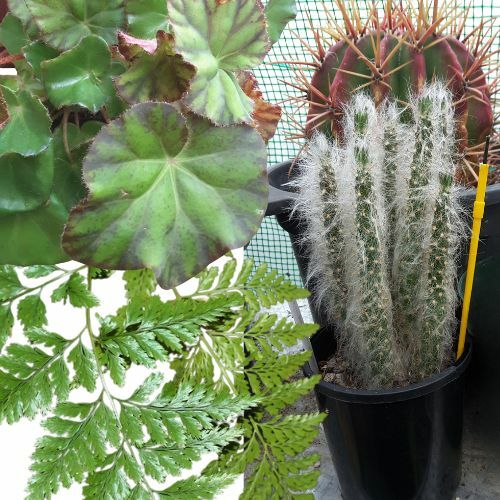
14: Plant a Mix of Plant Varieties in the same pot.
While some plant combinations require caution, creating a thriving mixed planting is definitely possible! Here's the key:
Know Your Plants: Leafy ferns and moisture-loving succulents have different needs. Ferns prefer shade and humidity, while succulents crave bright light and dry conditions. Terrariums are also unsuitable for cacti and succulents due to teh lack of airflow.
Match Their Needs: Group plants with similar light, water, and soil requirements for a harmonious coexistence.
Benefits of Mixed Plantings: Done right, mixed plantings can be aesthetically pleasing and create a mini-ecosystem in your pot.
Do Your Research: Before mixing plants, research their individual needs to ensure a happy and healthy home for all.
.
15 Myth: Sprinkle cinnamon on your soil to prevent pests and diseases!
Fact: While cinnamon has some antifungal properties, relying solely on it for pest and disease prevention isn't the best approach.
Focus on prevention: Proper plant care (watering, light, humidity) is the foundation of healthy plants less susceptible to problems.
Target the problem: Use specific treatments designed for the identified issue.
Remember: Cinnamon can be a helpful tool for treating specific fungal problems on plant cuttings, but it's not a magic bullet for overall plant health.
.
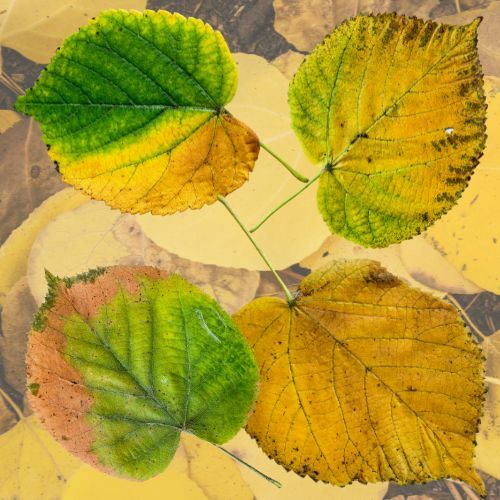
16: Don't panic at the first sign of yellowing or wilting!
Yellowing leaves: Not always a cause for concern. It could be natural aging of lower leaves. However, check for other signs like:
Leaf drop rate: Rapid leaf drop suggests a bigger issue.
Yellowing pattern: Yellowing throughout could indicate nutrient deficincy, while yellowing between veins might be a sign of iron deciciency.
Wilting: Can be caused by both under and overwatering. Before watering, check the soil moisture:
Stick your finger in the soil: If it feels dry, watering is needed.
Lift the pot: A lightweight pot suggests dry soil.
Remember: Yellowing and wilting can also be caused by factors like insufficient light, pests, or fungal diseases. If the watering check doesn't solve the problem, investigate further for these other potential causes.
Another blog I wrote about plant issues.
.
17: Always use older and large stems for propagation.
Size Matters, but not always: Not all plant types propagate well to thick, old stems. Research the best propagation method for your specific plant species.
Beyond stem cuttings: Techniques like tip cuttings (using the growing tip), layering (encourges root growth on a branch while still attached to the parent plant), and air layering (isolating a section of the stem while still on the plant) can be more successful for some plants.
Here's the key: Do your research before attempting propagation. Matching the technique to the plant species increases your chances of success.
.
18: Black Pots: Friend or Foe?
Black pots can be visually appealing, but are they the best choice for plant growth? Let's explore:
Myth: Black pots = Faster growth (due to warmth)
Fact: While black pots absorb more heat, this can actually be detrimental. Overheated roots can stunt growth or even harm the plant.
Better Options:
Insulated pots: these pots help maintain a stable root temperature, ideal for healthy growth.
Terracotta pots: These breathable pots allow for some airflow and prevent excessive heat buildup. Not suitable for moisture-loving plants though.
Remember: The ideal pot material depends on the plant species and your climate. Choose pots that offer good drainage and ventilation for optimal root health.
.
19: Not All Plants Crave Airy Roots!
While good air circulation is important for most plants, frequent soil aeration isn't always necessary. Here's the key:
Know Your plant: Research the specific needs of each plant. Some like cacti and succulents, thrive in compact soil. Others like vegatbles and most flowering plants, benefit from occasional aeration to loosen compacted soil and improve draiange.
Aeration vs. Over-aeration: Gently loosening the top inch of soil with a stick is helpful. However, excessive aeration can disturb delicate roots and stress the plant.
The Bottom Line: Research your plant's needs and aerate only when necessary for optimal root health.
.

20: Pebbles for Moisture: Myth or Madness?
Here's the truth about using pebbles on top of your houseplant soil:
Myth: Pebbles act as a magic moisture reservoir, keeping your plant hydrated.
Fact: Pebbles on top of the soil offer minimal moisture benefit. In fact, they can:
Hinder watering: Pebbles can create a barrier, making it harder for water to reach the roots.
Compact the soil: The weight of the pebbles can compress the soil, hindering draiange and potentially suffocating roots.
The Bottom Line: Research your plant's needs and aerate only when necessary for optimal root health. A light layer of fine stones or such is better than a big dumping of heavy rocks.
.
21 Myth: Always Fill your pots to the top.
While it might seem intuitive to fill a pot all the way to the rim with soil when planting, it's generally not recommended for most plants.
Here's why:
Settling: Soil tends to settle slightly after watering. If the pot is completely full, the soil might overflow when you water.
That space is essential as a reservoir, holding the water temporarily before it moves through the soil.
Posted: Sunday 23 June 2024
Recent Posts
Archive
Tags
| Top |

